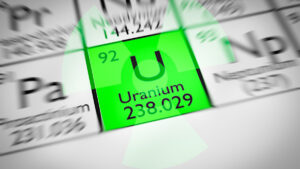A-Cap Energy drives development plan at Letlhakane Uranium Project with new country manager

A 3000m diamond drill program (PQ) will start in November to help drive ACB’s development of its uranium project in Africa. Pic via Getty Images
Peter Sheehan has been appointed as the new Country Manager in Botswana to head the revitalisation of A-Cap’s Letlhakane Project, host to one of the world’s largest undeveloped uranium deposits.
Sheehan’s 25-year plus career in mining and resources has been highlighted by roles around the world including managing director, chief geologist, geologic consultant, exploration manager, and senior-mine geologist.
With vast experience in managing mining work programs in Africa, including the management of large exploration teams and feasibility studies, A-Cap Energy (ASX:ACB) says Sheehan will be based in the company’s Francistown, Botswana office until November when the headquarters.
Track record in African mining projects
“Sheehan’s appointment delivers on our strategy to employ quality personnel with a strong track record in African mining projects,” ACB managing director Andrew Tunks says.
“His experience will be a great asset to the ramp up of in-country activities at Letlhakane, as well as the development of an updated feasibility study.”
Exploration kicks off with 3,000m drilling
A 3,000m diamond drilling program (PQ) set for November is designed to collect metallurgical samples for a new, detailed beneficiation study currently underway.
The new study follows a 2010 beneficiation study that reported significant upgrades of uranium grade of around 1.5 times back in 2010 and highlighted leaching test work, which utilised advances in sorting technology.
ACB has taken possession of two new field vehicles to support exploration activities and is in negotiation for a new field base at Serule, just 7 km south of the Letlhakane deposit.
World-leading technical partners on board
Technical partners have been engaged to increase the profitability of Letlhakane with world-leading expertise in uranium ore sorting and processing.
Australia’s Nuclear Science and Technology Organisation, (ANSTO) has started sighter beneficiation testwork of historic composite ore material from Letlhakane using radiometric, XRT and hyperspectral sensors, as well as gravity separation using spirals and dense media separation.
ACB says this program will later be expanded to test new samples obtained from the upcoming drill program.
Additionally, a gap analysis of mineralogy and hydrometallurgy led by MinAssist (experts in uranium extraction) has also highlighted the need for some additional mineralogy (QXRD) analysis.
Existing head and residue samples from Gorgon South, Kraken and Serule West were recovered from ANSTO in Sydney from previous Acid Soluble Uranium (ASU) test work.
These samples are perfect for quantitative XRD analysis to build a critical database recording the mineralogy of head and residue samples for the main ore types.
This article was developed in collaboration with A-Cap Energy, a Stockhead advertiser at the time of publishing.
This article does not constitute financial product advice. You should consider obtaining independent advice before making any financial decisions.
Related Topics

UNLOCK INSIGHTS
Discover the untold stories of emerging ASX stocks.
Daily news and expert analysis, it's free to subscribe.
By proceeding, you confirm you understand that we handle personal information in accordance with our Privacy Policy.








